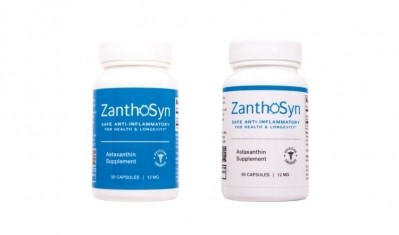NAXA attacks Cardax’s synthetic astaxanthin via citizen’s petition

The petition, which was filed yesterday with the US Food and Drug Administration, asks the agency to review the regulatory status of Cardax’s ingredient. NAXA maintains that the ingredient is not a legal dietary ingredient. If FDA disagrees and determines that it is, then the petition states further that the agency should rule that Cardax’s ingredient should be subject to New Dietary Ingredient provisions.
NAXA formed to promote natural forms
NAXA was formed several years ago with the mission to publicize the difference between natural astaxanthin and synthesized versions. The organization hinged this argument on the chemical differences between the natural forms, derived primarily from Haematococcus pluvias algae, and chemically synthesized forms.
Three sterioisomer positions are possible in the astaxanthin molecule, and the natural form contains but one of these, whereas synthesized forms contain all three in varying ratios. NAXA has maintained that the safety and efficacy information about astaxanthin pertains to this one sterioisomer; in the organization’s view the safety and efficacy parameters of the synthesized forms are unknown.
“At SupplySide West FDA said in a public form that it needs help from industry to shed light on questions like these,” Scott Steinford, executive director of NAXA, told NutraIngredients-USA. “In the best case scenario we hope this petition will provoke FDA into action.”
Petition: Synthetic form should go through NDI process
The petition, which can be viewed here, was prepared by the law firm Amin Talati Upadhye. It lays out a comprehensive line of reasoning specific to Cardax’s ingredient that more or less repeats the information that NAXA has disseminated previously regarding synthetic forms in general. The petition claims that FDA should rule that Cardax’s astaxanthin does not meet the definition of a dietary ingredient because it is a synthesized form, and hinges that argument on statements contained in the most recent New Dietary Ingredient Draft Guidance issued by FDA. In that document the agency has taken the hardline position that synthetic versions of compounds found in botanical sources do not meet this definition because they were never part of the plant. That determination has been highly controversial among dietary supplement stakeholders, and NAXA’s reliance on this line of reasoning would to some degree put it outside the mainstream of the industry.
Whether these synthesized forms ought to be considered New Dietary Ingredients is less controversial, though. Astaxanthin was not on the market as a food ingredient prior to the DSHEA grandfather date of Oct. 15, 1994. Several producers of astaxanthin derived from algae have filed NDIs on their ingredients, and the NAXA petition argues that Cardax should be required to do the same. If the agency agrees on that point, NAXA asks that Cardax’s ingredient be ruled to be adulterated, in that the company has not filed an NDI notification.
Steinford noted that Cardax has in the past claimed that its ingredient is identical to natural astaxanthin, yet NAXA’s research has shown that only 25% of ZanthoSyn is comprised of the same sterioisomer as the natural form. But, the petition points out that Cardax has also made claims that its ingredient is more readily absorbed than the natural forms.
“They are claiming equivalence and superiority in the same paragraph,” he said.
Cardax: Ingredient complies with regulations
Cardax, for its part, claims that its ingredient, which is on the market as a finished product branded as ZanthoSyn and is for sale in GNC stores in Hawaii as well online, meets all relevant regulatory standards.
“ZanthoSyn, our astaxanthin dietary supplement, complies with all FDA regulations. The astaxanthin in ZanthoSyn is synthesized with purity and known precision, has been extensively safety tested, and is self-affirmed as Generally Recognized as Safe (“GRAS”) according to FDA regulations,” said David A. Watumull, CEO of Cardax, which is based in Honolulu.
In a communication with NutraIngredients-USA, Watumull also alluded to the provision in the NDI Draft Guidance that new ingredients that have achieved GRAS status, when used in a dietary supplement, do not have to file an NDI Notification provided that they have been “present in the food supply present in the food supply as articles used for food in a form in which the food has not been chemically altered” (FDA’s words).
A synthetic version of astaxanthin has been in human food web for years as an additive in the feed given to farmed salmon to give their flesh an appealing red color. Whether the microgram quantities of synthetic astaxanthin that are then ingested by end users qualifies as an “article used for food” and whether the safety information that applies to that dosage ought to also be applicable to the typical 12 mg dosage found in a supplement have been questions raised within the industry. Nevertheless, this argument forms a core part of Cardax’s reasoning for the compliant regulatory status of its ingredient.
“We further note that synthetic copies of natural substances present in the human diet as food additives (including those that are self-affirmed as GRAS for direct addition to food) may be used as dietary ingredients in dietary supplements without New Dietary Ingredient (“NDI”) notification, in accordance with FDA regulations,” Watumull said.
















